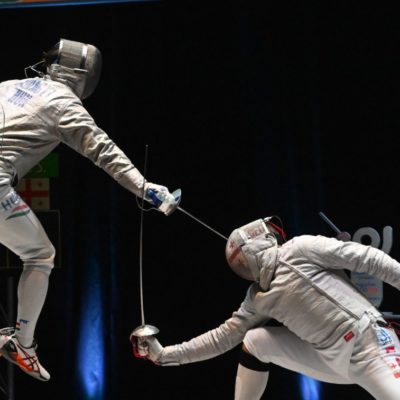Circular Takes and Deceives
This drill is designed to facilitate the development of hand speed, small blade work, feeling the opponents blade, and the ever present sense of distance and timing.
A. One fencer is the designated taker (attempts to take the opponent’s blade with a circular take) and the other fencer attempts to deceive the take. There are no touches in this drill.
B. The designated taker may attempt to score a touch if he/she is able to take the blade. The defender attempts to avoid having his/her blade taken by deceiving. If the attacker gets the blade and makes an attempt to score a touch, the defender may avoid the hit by the use of distance.
C. Both fencers may attempt to take the blade with circular takes. No hits are attempted.
D. Both fencers may attempt to take the blade with circular takes. As one of the fencers attempts to take the blade the other should attempt to avoid being taken. If at any time one fencer gets the blade and is in the correct distance a straight attack may be executed (with lunge, advance lunge, or jump lunge only). The defender may not parry, but may defend with distance. If a fencer successfully avoids the take and is in correct distance he/she may attempt to score a touch with a straight attack.





